The third day of our trek heading roughly north from Dunai in Dolpo saw us continuing to follow the Suli Gad river.The precipitousness of the terrain was now less scary and – perhaps – my confidence riding Gora was improving. I was taking in the scenery better, although was distracted by some itching in places that suggested I’d picked up some fleas during the night. The birdlife was rich too and butterflies flitted everywhere – they were especially attracted to places where mules had urinated.
Movement in amongst some scrubby vegetation grabbed my attention and I slipped off Gora, readied my camera and staggered off into the undergrown. The outliers of what proved to be quite a big herd of so-called blue sheep were remarkably unfazed by my interest and I was able to approach to within about 30m before any of them started to watch me. There were about three dozen but it was hard to spot them until they moved, although each has a prominent white horseshoe shape in the rump, which is eye-catching. They are fine animals which derive their name from the fact that their fur can be a kind of blue-grey, although these were perfectly camouflaged against the rusty sandstone of this part of the valley. All individuals were strikingly marked with dark fur on the flanks and ringing their legs and white underbellies. Some of the rams sported substantial horns that rather inconveniently spread sideways from their heads. Their ability to dance around on precipitous crumbly cliffs was awe-inspiring and made me wonder how sheep hooves give their owners purchase on rocks while pony hooves simply slip.
Gora and I continued upwards, he seemingly unconcerned when his feet skidded off boulders but often paused to consider how we were to ascend especially rocky pieces of path.
A little further on and I clocked a small mammal scuttling across the path up ahead. I slipped off Gora again and went to look at where the creature had disappeared over the edge. At this point the path had been stabilised with a kind of dry stone walls and it looked likely that the Guinea pig sized animal had taken shelter here. I sat down to watch.
After perhaps 20 minutes a small nose poked out nervously from between the rocks. His black beady eyes gave nothing away and the only part of him that moved was his whiskers. I fidgeted. The head disappeared. Minutes later his head appeared from between rocks at a higher level. He disappeared again then reappeared at ground level and ventured out beyond his refuge to nibble little leaves and other bits of vegetation. These shy little mouse-hares are so charming. This one had a coat that was dark brown and slightly grizzled on top and rufus beneath. His ears were too big for a mouse and not big enough for a rabbit, to which they are related.
The route took us up above dramatic sandstone spikes, past a cave where a demoness lives and on to the perfect viewpoint of the waterfall thundering through a chaos of massive boulders. Up further and over a spur we were greeted by our first view of Phoksundo Lake, below us at 3600m. It was too gorgeous to be real – a wonderful lapis blue, making even the cloudless sky look a little washed out.
In the day-and-a-half we spent close to the lake we saw it change through turquoise to lapis to a deeper shade of sky blue, to almost slate-grey as the evening light gathered. Sometimes the surface was utterly still. Sometimes it was caught be gentle breezes. It was always a little different. The colour was always surprising, like it had been photoshopped.
The lake is huge, fed by glaciers and 145m deep which perhaps explains the depth of the blue colour but around the edges there’s a pine-green ring: the metre or so of shallows before the water plunges down into lifeless depths.
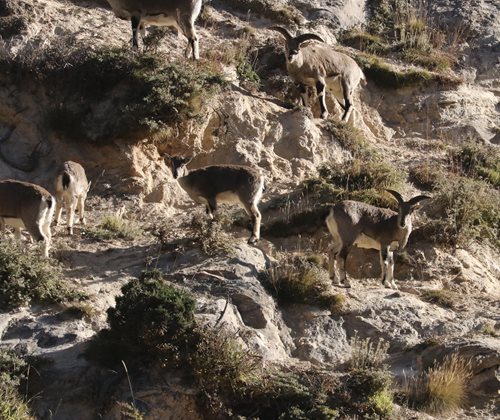 |
| So-called blue sheep in Dolpo |
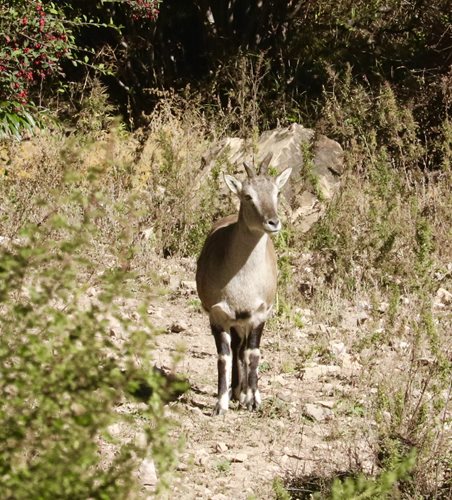 |
| Wild blue sheep |
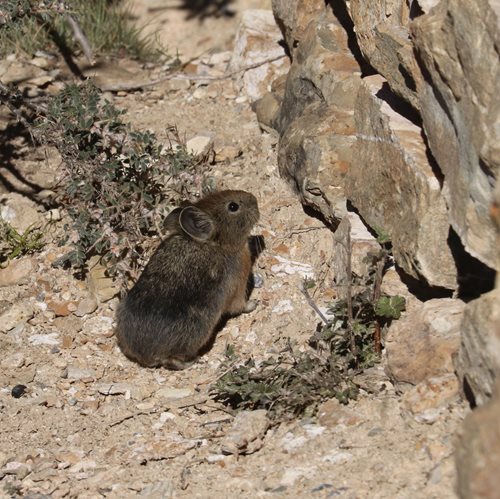 |
| The cheering sight of a pika or mouse-hare |
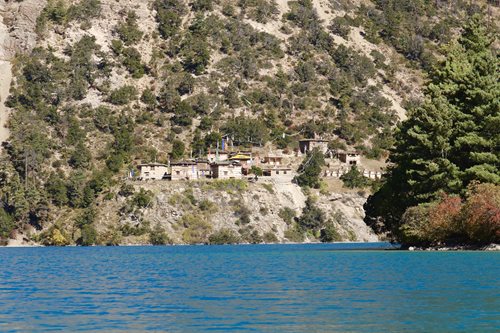 |
| Phoksundo lake and gompa near Ringmo at 3600m |
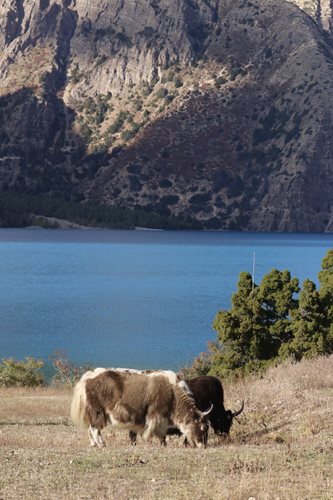 |
| Yaks and Phoksuno lake near Ringmo |
The first part of my account of this trip into Dolpo is here
Pony trekking in Nepal and the next is
Dolpo - episode 4